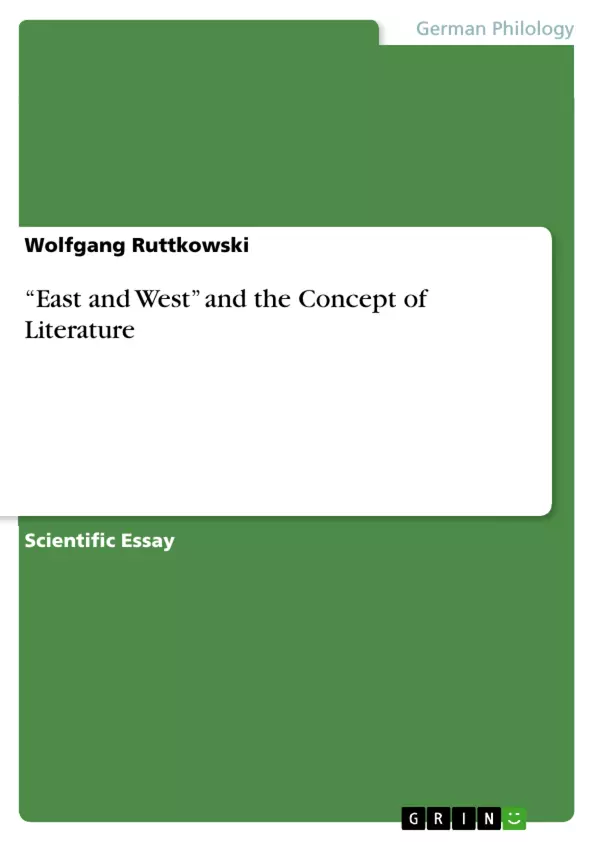By carefully comparing observations made by specialists in Chinese, Indian, Japanese, and Western literature concerning problems of literary values, canon-formation, and the concept of literature itself, the author tries to answer some of the most pertinent questions in comparative aesthetics and ethnopoetics, specifically:
Are literatures of radically different cultures comparable regarding literary values?- Do “universal” literary values exist?- Do literary values remain the same within the development of one culture?- Does the fact that certain works of literature have been valued over centuries indicate that “eternal values” exist?-
Is the concept of literature the same in radically different cultures?- Does it remain the same within the development of one culture?- Are the basic genres (the lyric, epic, and dramatic) comparable?- Are certain analogous phenomena in Indian and Western literature indicative of basic similarities between these literatures?-
Is at least the theory deduced from these literatures similar?- Is a unified theory of literature desirable?- Are literary canons established mainly according to perceived aesthetic values in the selected works?-
If the answer to all of the questions above is NO, wherein lie the basic differences between Eastern and Western literatures?-
(In: Journal of Comparative Literature and Aesthetics, Sambalpur University, Orissa/India, XXIV, 1-2, 2001, 89-125)
Inhaltsverzeichnis (Table of Contents)
- In a review of literature on the topic²
- It is not only the quality of esthetical standards that varies widely in different cultures
- Not only do variants in its sub-groups cause the concept “literature” to fluctuate
- While Arnheim writes about art in general, Terry Eagleton concentrates on literature only
- This last view is not entirely new
- Arnheim and Eagleton are not the only ones who have shown us that different periods within the European cultural sphere completely differed in their artistic ideas and ideals
Zielsetzung und Themenschwerpunkte (Objectives and Key Themes)
This text aims to explore the concept of literature in both Eastern and Western cultures, specifically focusing on the comparability of literary values, canon formation, and the concept of literature itself across different cultural contexts. The author seeks to understand if “universal” literary values exist, if literary values remain constant within cultural development, and whether the concept of literature is universally applicable.
- The Comparability of Literary Values Across Cultures
- The Existence of “Universal” Literary Values
- The Development of Literary Values within a Culture
- The Concept of Literature in Different Cultures
- The Formation of Literary Canons
Zusammenfassung der Kapitel (Chapter Summaries)
- This chapter examines the use of Western critical vocabulary in analyzing Chinese literature. It introduces the concept of “historically adequate” approaches in comparative aesthetics and ethnopoetics. The author argues that while historical context can inform canon formation, aesthetic criteria alone cannot explain the selection of literary works.
- This chapter discusses the concept of “masterworks” and how they are selected. The author challenges the assumption that all “masterworks” are chosen based on universal aesthetic standards, arguing that such standards vary across cultures and even within a single culture. The chapter also explores the concept of “World Literature” and its limitations in encompassing cultures outside of the Western sphere.
- This chapter examines the concept of literature itself, questioning what constitutes “literature” in different cultures. It challenges the assumption that the concept of “literature” is universal, citing the absence of a comparable concept in classical Arabic. The chapter also explores the social embedding of literature and how it evolves across different historical periods.
- This chapter explores the idea of aesthetic values being culturally relative. The author argues that “literature” is not a fixed category but rather a construct subject to changing value judgments. The concept of a “literary canon” is presented as a construct created by specific individuals in particular historical contexts for specific reasons. The chapter also discusses the changing interpretations of literary works across different historical periods, highlighting the role of reader interpretation and the “incommensurable” nature of great poetry.
- This chapter further emphasizes the diversity of artistic ideas and ideals across different periods within the European cultural sphere. The author questions the universality of “pure art” and its relation to broader social contexts.
Schlüsselwörter (Keywords)
The key terms and concepts explored in this text include: comparative aesthetics, ethnopoetics, literary values, canon formation, concept of literature, universal values, cultural relativity, World Literature, aesthetic standards, “masterworks,” historical context, social embedding, reader interpretation, and the “incommensurable” of great poetry. The text also touches upon the relationship between art and social contexts, exploring ideas of cultural colonialism, the evolution of art across different historical periods, and the diverse perspectives on the concept of “literature” across cultures.
- Quote paper
- Dr. Wolfgang Ruttkowski (Author), 2001, “East and West” and the Concept of Literature, Munich, GRIN Verlag, https://www.grin.com/document/7732



